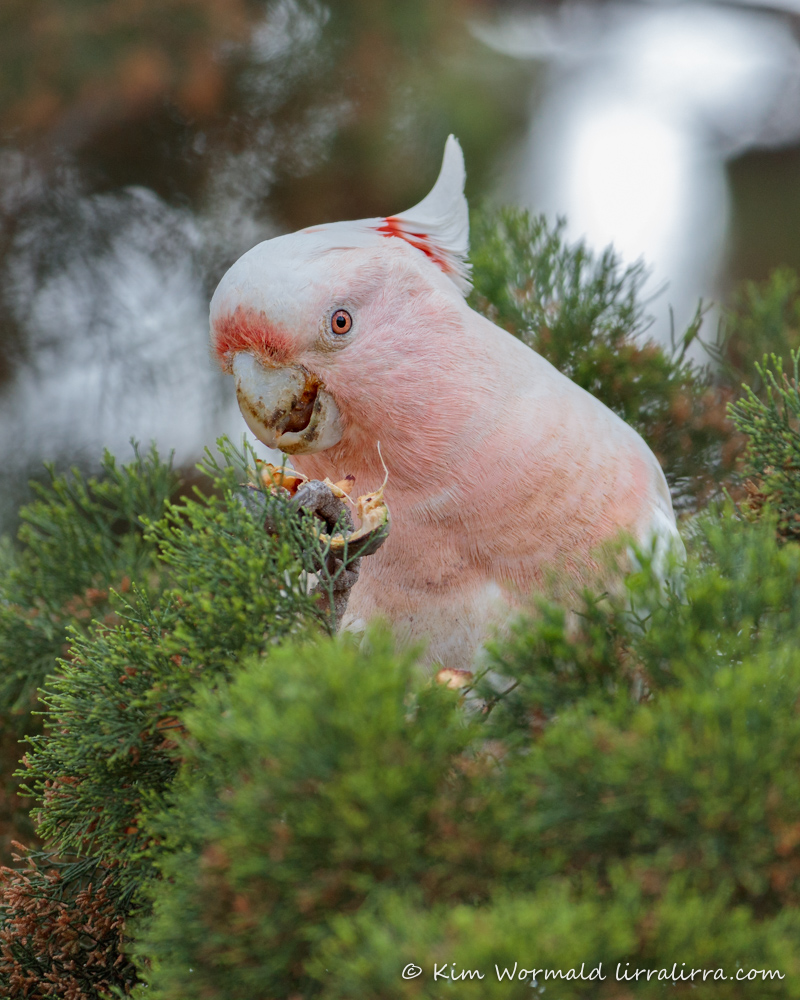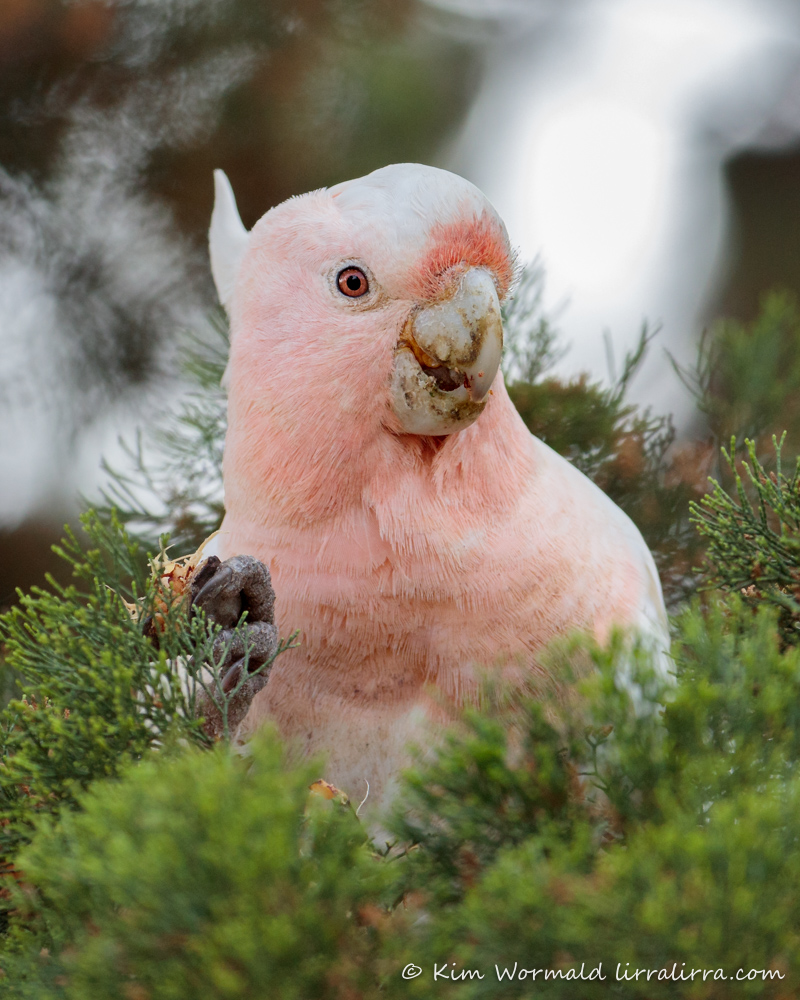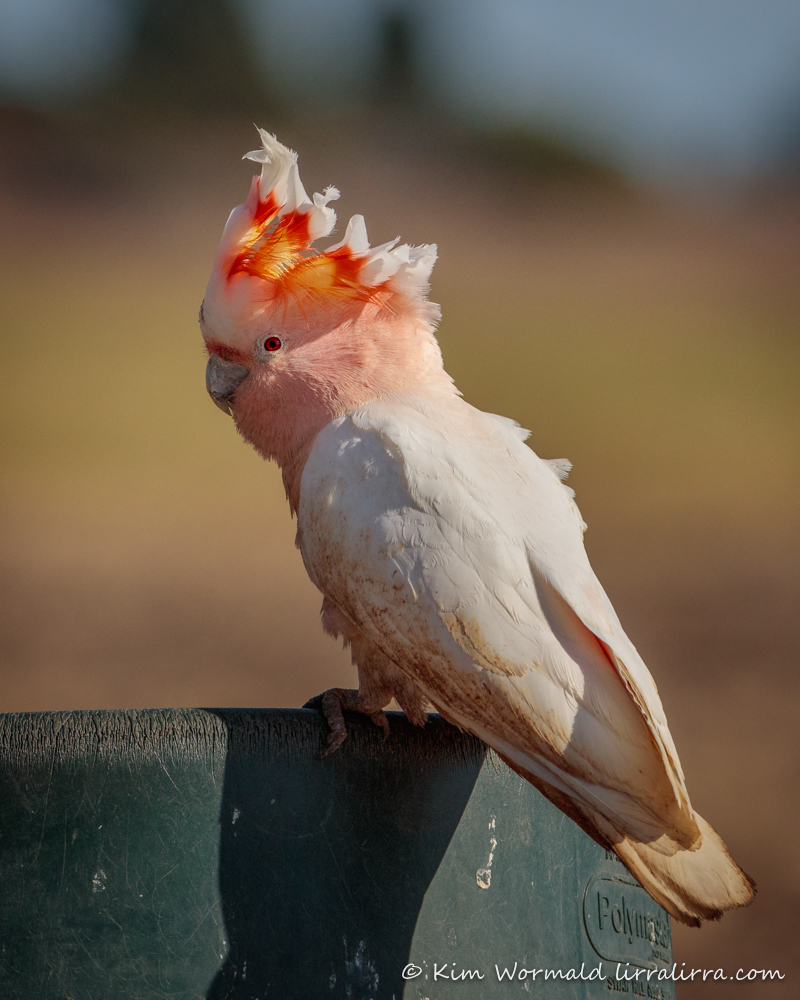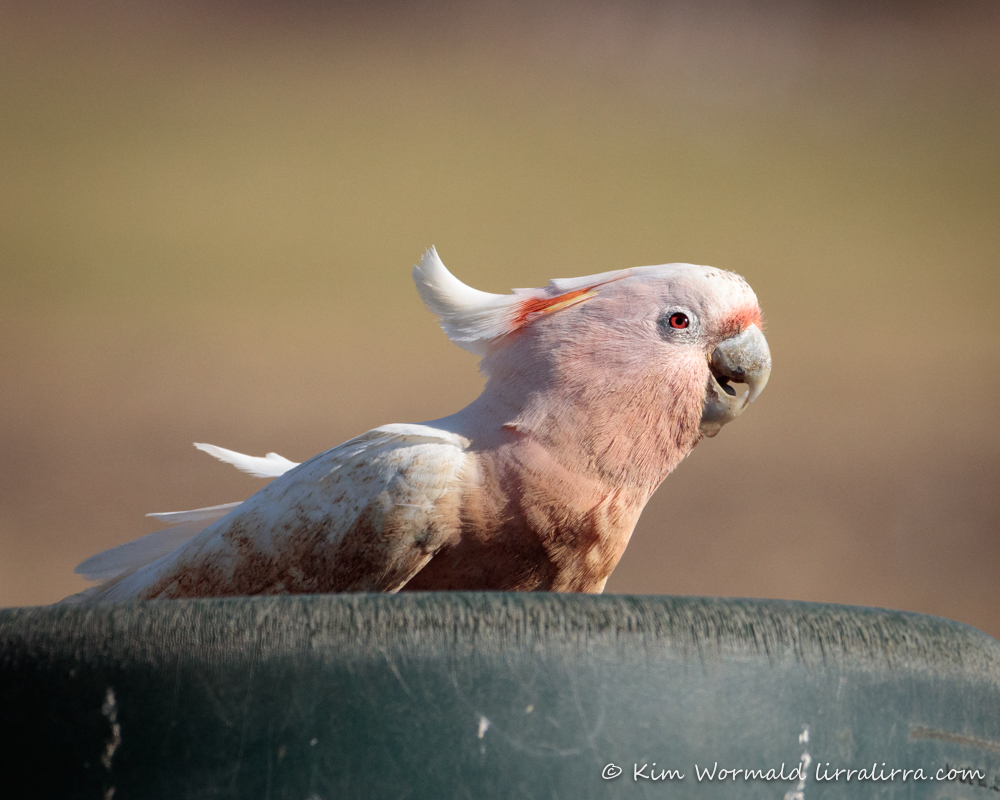Seeing Pink Cockatoos up close and dirty was another highlight of my recent Mallee trip.
Pink Cockatoo (Lophochroa leadbeateri)
Looking beneath Mallee pines for debris is a good way to see if the fruits are being eaten, failing that having a beady-eyed, super observant and lovely friend with you is a brilliant alternative.
Pink Cockatoos are listed as Vulnerable in Victoria (where I saw these lovelies), NSW and Queensland, Rare in South Australia, and Secure in WA and the NT. Their habitat has been impacted by land clearing which has reduced the number of suitable nesting hollows and depleted their food sources. They are also a species which is targeted by collectors for the illegal captive bird trade, which is a sickening thought.
Pink Cockatoo (Lophochroa leadbeateri)
And here’s the other profile. The Mallee pine fruit, in both of the above images, is being held in the bird’s right foot which means I need to do more research on the ‘left-handed parrots’ story as shared in a previous post about Gang-gang Cockatoos.
These cockatoos are considerably smaller than the more common Sulphur-crested variety; they measure about 39cm (compared with 48cm) and weigh about 375g (compared to over 800g).
.
Pink Cockatoo (Lophochroa leadbeateri)
Birds don’t get much more spectacular that this. The early morning light on this bird was stunning. Their crests appear predominantly white until raised when their magnificence truly shines, there just aren’t enough superlatives.
As it perched on the edge of a small farm trough I had to wonder if it had turned up for a drink or a bath; its feathers were filthy. The dirtiness is possibly from being in a nesting hollow. It could be a young bird as emerging pin feathers can be seen on its head but females’ eyes become red as the mature so it could be an older bird molting – either way it appears to have spent time in a nesting hollow.
Pink Cockatoo (Lophochroa leadbeateri)
The image above makes me smile as the bird looks like it’s laughing while taking a much needed bath.
This species is also referred to as Major Mitchell Cockatoos but their namesake was a surveyor during the 1800s whose expeditions included some heart-breaking interactions with the indigenous people whose country they were surveying – I am one of many who prefer to call them Pink Cockatoos.
Happy birding
Kim
~ thank you for visiting and commenting
~ use the subscribe box if you’d like to receive a weekly email when lirralirra is updated





Wonderful as always! I will from now on also call them Pink Cockatoos (had never thought of it until I read your informative note) So glad you got over to the Mallee!
I’m so pleased I got there, thank you! And great that you’ll call them Pink Cockatoos now too
Glorious, dirty, and happy Pink Cockatoos, beautifully captured on film.
Hi Kathleen, they really do look happy, it makes me smile
I didn’t know that about major Mitchell. From now on I’ll call them pink cockatoos too. I just love them. One of my favourite birds! Great photos!!
I’m so glad you like the images of one of your favourite birds, and hurrah about calling them Pink Cockatoos
Beautiful, beautiful, beautiful.
And yes, pink cockatoos is a MUCH better term.
I’m glad you agree about the name, and they really are stunning birds, such a joy to watch
Beautiful as always, Kim.
Thank you Neil